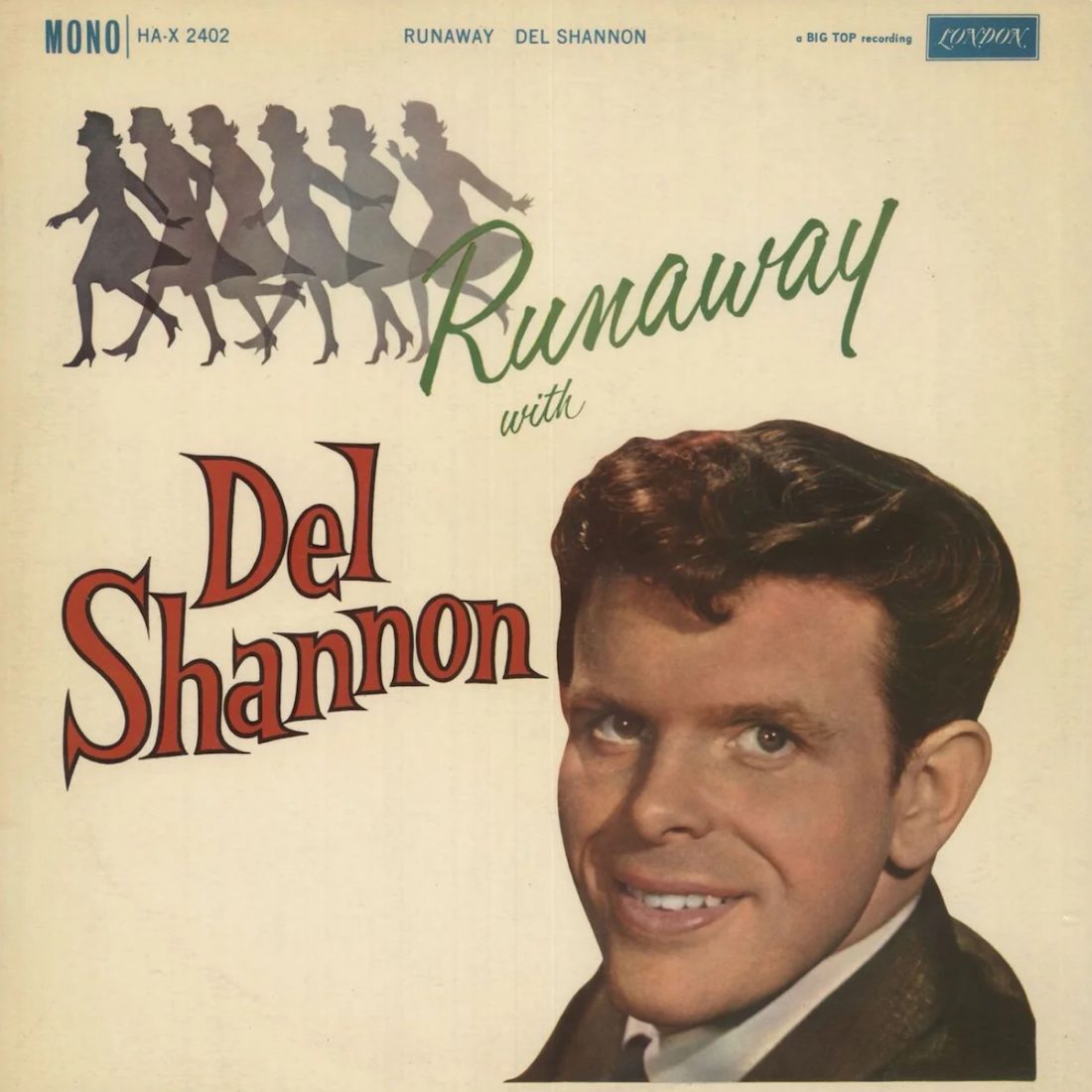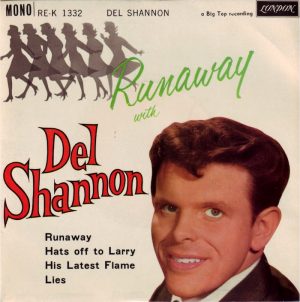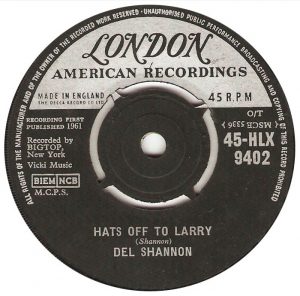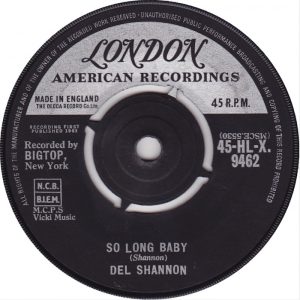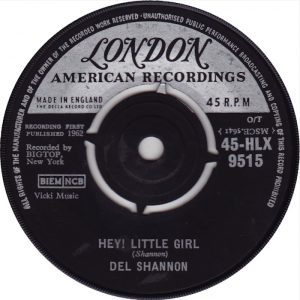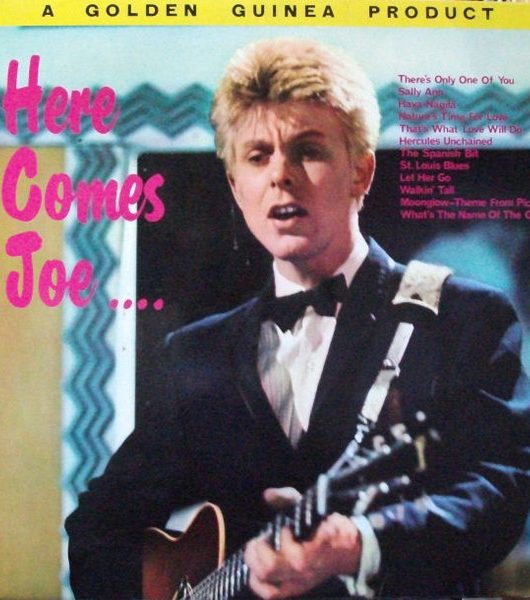We look back at the troubled life of Del Shannon – the revolutionary songwriter who struggled to break away from the Runaway success he enjoyed with his early pop hits…
Words by Randy Fox
In the fall of 1965, Del Shannon was fed up. During a trip to Gun Lake, a popular recreational area just south of Grand Rapids, Michigan, his frustrations with the music business came to a boil.
“Del was upset that both [of his 1965 singles] Break Up and Move It On Over bombed,” his close friend Dan Bourgoise recalled to music writer Brian C. Young. “He thought he was staying on the cutting edge with a new sound, but neither of the songs were accepted by the public. He sailed copies of the 45s into the lake. Not one or two, but a whole box of 45s! One at a time. ‘Forget this, I want out!’ he said. I tried to calm him down and yelled, ‘The record’s great! You’re crazy, Del!’”
It was not the first time Shannon had seriously considered ending his music career, nor was it the last. Many aspects of his character heightened the conflict between the desires to create art and achieve stardom. Shannon was a creative songwriter who also excelled at interpreting the lyrics of others; a positive and ambitious man who often struggled with depression and alienation. He was an innovative and forward-thinking musician who found himself pigeonholed by his early hits.
I’ma Walkin’ In The Rain…
Born Charles Weedon Westover on 30 December 1934 in Grand Rapids, Michigan, Shannon was drawn to music at an early age. Country was his first love, but he also enjoyed pop by groups like The Ink Spots, who inspired him to push his vocal range and send his voice soaring from his crackly tenor to a stratospheric falsetto.
By 1960, Shannon was living in Battle Creek, Michigan, with his wife and two children, and fronting a popular bar band featuring keyboardist Max Crook on the Musitron, an early synthesiser Crook invented. Shannon’s vocal range and the unique sound of the Musitron garnered the attention of a local DJ, who pitched their demo recordings to Harry Balk and Irving Micahnik of Talent Artists in Detroit. Balk secured the pair a contract with the New York-based Bigtop Records and suggested a name change for Charles Westover – to Del Shannon.
Shannon’s first single, Runaway, was an infectious rocker built around the themes of lost love and loneliness, spotlighting Del’s amazing vocal delivery and the unusual sound of the Musitron. Released in February 1961, the single quickly shot to No. 1 in the US and also took the top spot on the UK chart. More hits followed – Hats Off To Larry, So Long Baby, Hey! Little Girl, Little Town Flirt and more.
UK Favourite
While Shannon was scoring hits on both sides of the Atlantic, his records generally performed better in the UK, where a fanatical fanbase led to multiple tours there and an appearance in the 1962 British rock’n’roll movie, It’s Trad, Dad!
After an April 1963 performance at the Royal Albert Hall, sharing the bill with The Beatles, Shannon recorded Lennon-McCartney’s From Me To You, making him the first American to cover what was soon to be the biggest band in the world.
In the summer of 1963, Shannon broke ties with both Bigtop Records and his management team, Balk and Micahnik, over unpaid royalties and the desire for more creative control of his work. Unable to attract the attention of a major label, Shannon founded Berlee Records.
By the end of that year, Shannon had resolved his differences with his former management and secured a new recording contract with Amy Records, including a higher royalty rate and greater artistic freedom. Over the next two years, Shannon cut a series of great singles, expressed his continuing love for country music with the album Del Shannon Sings Hank Williams, and demonstrated his growing confidence as a songwriter with the outstanding, mostly self-penned LP One Thousand Six Hundred Sixty One Seconds With Del Shannon.
British Invasion
Despite the artistic successes, Shannon was finding the road to hits rockier as each subsequent 45 scored lower on the charts. In the summer of 1965, he released two outstanding singles – the moody rock ballad Break Up, and the pedal-to-the-metal rave-up Move It On Over. The records were lean and tough, but both failed on radio and in the charts. The arrival of the British Invasion and the explosion of new US acts inspired by the Brits typecast many pre-Beatles artists as has-beens. Shannon knew the only way to break free of the stigma was the resources and clout of a major record label. Amy Records clearly lacked both.
In the early weeks of 1966, Shannon spent time in Los Angeles, where he befriended Tommy Boyce of the singer-songwriter duo Boyce and Hart. As Shannon’s contracts with Talent Artists and Amy Records had recently ended, he was ready for a change. Moving his family to Los Angeles, he soon landed a major league deal with the LA-based Liberty Records.
The Big Hurt
Liberty were eager to record Shannon and teamed him up with their staff producer, Tommy “Snuff” Garrett and songwriter/session player Leon Russell. The result was an impressive single playing to Del’s strengths as a song stylist – The Big Hurt, a Wayne Shanklin track that had been a hit for pop singer Toni Fisher in 1959. Shannon’s version was a grand, operatic rock production, mining the same themes of loneliness and loss running through many of his earlier hits.
Before the single hit store shelves, Shannon returned to the studio to cut his first Liberty album in March 1966. Liberty were very successful in the album market, racking up huge profits from artists such as Bobby Vee, who by the mid-60s only occasionally scored hits but nevertheless moved thousands of LPs. Liberty viewed Del Shannon through the same lens, leading to his first Liberty album, This Is My Bag, following the Vee model of only a few original songs alongside covers of recently popular hits.
Liberty’s marketing strategy seemed right on target when This Is My Bag scored respectable sales, while The Big Hurt struggled to No.94 on the singles chart. For Total Commitment, the same pattern followed – decent sales of the album, but the single, a crackerjack cover of The Rolling Stones’ Under My Thumb, only made it to a disappointing No.128 in the US.
Monkee Business
While Shannon was enjoying financial success, his creative desires remained unfulfilled, as the public seemed indifferent to the singles he took great pride in. Once again, Tommy Boyce came to the rescue, this time with the song She, a moody Boyce and Hart rocker cut recently by The Monkees for their second album. Boyce suggested Shannon cover the song and offered to produce the session. With the addition of Max Crook on the Musitron, the recording was an exciting contemporary rocker with a classic Del Shannon sound.
Liberty released She in late December 1966, but three weeks later, the album More Of The Monkees hit the shelves – with their version of She as the opening track. With The Monkees’ position as the hottest-selling act in the US at the time, suddenly no one cared about Del’s version.
When Shannon flew to the UK in January 1967 for a two-month tour, the disappointment over the single’s failure hadn’t fully hit. At a BBC appearance, he met Andrew Loog Oldham, The Rolling Stones’ manager and producer. Oldham expressed his admiration for Shannon’s version of Under My Thumb and followed the compliment with an irresistible offer, to record an album.
Moving With The Times
Shannon was overjoyed at the prospect of cutting an LP that would stand alone as a focused artistic statement with a star producer. Unfortunately, Liberty were sceptical of the end result, the album Home & Away, and decided not to release it. Rather than focus on his disappointment, Shannon was eager to try again. Perhaps a focus on his songwriting would provide the breakthrough he wanted desperately.
When Liberty suggested he should take a stab at the currently popular psychedelic sound, Shannon embraced the idea, eventually writing (or co-writing) 10 of the 12 tracks that appeared on his next album. Released in February 1968, The Further Adventures of Charles Westover was a pop-psych masterpiece. From the pop charm of Thinkin’ It Over to the freakbeat drive of Runnin’ On Back and the baroque psychedelic swirl of Magical Music Box, Shannon proved he was anything but a has-been and more than capable of adapting his style to contemporary trends. Unfortunately, Liberty Records had no idea how to promote the album and it sold poorly. By the end of 1968, Shannon had been dropped from the label.
Downward Spiral
The next 12 years proved especially difficult for Del Shannon. Two singles for Dunhill Records in 1969 and 1970 failed to attract any attention and Shannon released only a handful of records in the 1970s. His popularity persisted in the UK, where he recorded a live album in 1973 for United Artists Records and scored a minor hit single for Island Records in 1975. He achieved financial security by transitioning to the talent management field, founding the music publishing company Bug Music with his close friend Dan Bourgoise and performing his early hits in oldies package shows throughout the 1970s. However, as the decade wound on, he descended deeper into depression and alcoholism.
In 1978, after leaving alcohol behind, Shannon began work on the album Drop Down And Get Me with Tom Petty & The Heartbreakers. After its release in 1981, he spent considerable time in Nashville, reconnecting with his roots, pitching songs to artists and recording a country album for Warner Brothers Records. Although he scored a minor country hit in 1985 with the single In My Arms Again, the full album failed to garner a release.
Songs Of Sadness
Finally, as the 80s neared their end, Shannon’s prospects for a successful recording career began to brighten.
A revisiting of Runaway with new lyrics became the theme for the NBC TV programme Crime Story, and he began working on a new album with Petty and Jeff Lynne (who had previously recorded with Shannon in the studio back in the mid-70s). There was also talk of Shannon joining Lynne, Petty, Bob Dylan and George Harrison in the supergroup The Traveling Wilburys after Roy Orbison’s death in December 1988.
Although Shannon’s prospects for the future appeared to be bright, he continued his struggle with clinical depression. In late January 1990, his doctor prescribed a course of the anti-depressant drug Prozac. Two weeks later, on 8 February, Shannon was found dead from a self-inflicted gunshot wound at his home in Santa Clarita, California. Del Shannon’s final album, Rock On!, was released in 1991, and he was inducted into The Rock & Roll Hall of Fame in 1999.
Throughout his life, Shannon fought an impassioned battle for artistic control of his music, recorded some remarkable songs, and was all too often left crushed by the fickle and indifferent nature of the music business. More than once, he pulled himself back from the brink of the darkness that constantly threatened to envelope him.
“It’s a shame Del didn’t beat his depression and stay with us,” Andrew Loog Oldham observed in a 2012 interview. “He’d have written a great song about it – a wonderful pop falsetto-novella about beating the hurt and the pain.”
For Del Shannon click here
Read More: 20 Smash Hits From The Teen Idols

